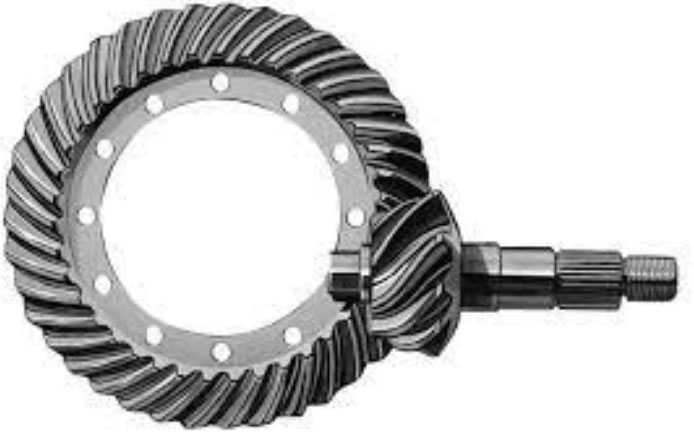
Hypoid gears offer distinct advantages and find extensive applications in modern machinery due to their unique design features and functional characteristics. Understanding the advantages and applications of hypoid gears is crucial for engineers and designers when selecting gear systems for specific industrial needs. In this article, we will explore the advantages of hypoid gears and their wide-ranging applications in modern machinery.
- Advantages of Hypoid Gears:
- High Torque Capacity: Hypoid gears can transmit high torque due to their robust design and increased contact area between the gear teeth.
- Efficiency: Hypoid gears exhibit high mechanical efficiency, resulting in minimal power loss during power transmission.
- Compact Design: Hypoid gears have a compact size and can transmit power at various angles, making them suitable for space-constrained applications.
- High-Speed Capability: Hypoid gears can handle high rotational speeds, making them suitable for machinery requiring rapid motion.
- Axial Offset: The offset between the gear axes allows for more flexibility in gear arrangement, enabling smoother power transmission in complex systems.
- Strong and Durable: Hypoid gears are designed to withstand heavy loads, shocks, and vibrations, making them suitable for demanding applications.
- Automotive Applications:
- Differential Gears: Hypoid gears are widely used in automotive differentials to transmit power from the drive shaft to the wheels. Their high torque capacity, compact size, and efficient power transmission make them ideal for this application.
- Drivetrain Systems: Hypoid gears are utilized in various automotive drivetrain systems, such as transmission systems and axle assemblies, for torque transmission and speed reduction.
- Power Tools:
- Power tool applications, such as electric drills, circular saws, and angle grinders, often utilize hypoid gears for efficient power transmission and high torque handling.
- The compact size and ability to transmit power at different angles make hypoid gears suitable for power tool designs.
- Heavy Machinery and Industrial Equipment:
- Construction Machinery: Hypoid gears are commonly used in construction machinery, such as excavators, loaders, and bulldozers, for their ability to handle heavy loads and transmit power efficiently.
- Industrial Gearboxes: Hypoid gears find applications in industrial gearboxes, providing speed reduction, torque multiplication, and efficient power transmission in various manufacturing and processing equipment.
- Robotics and Automation:
- Robotics: Hypoid gears play a crucial role in robotics for precise motion control, transmitting power between joints, and achieving accurate movement in robotic arms and manipulators.
- Automation Systems: Hypoid gears are employed in automation systems for efficient power transmission and accurate positioning in conveyor systems, assembly lines, and other automated machinery.
- Specialty Applications:
- Aerospace: Hypoid gears are utilized in aerospace applications, such as helicopter rotor systems, for their high torque capacity, compact size, and efficiency.
- Marine: Hypoid gears are used in marine propulsion systems, providing power transmission and speed reduction in boats and ships.
The advantages of hypoid gears, including high torque capacity, efficiency, compact design, and versatility in various applications, make them a preferred choice in modern machinery. Their reliability, durability, and ability to handle heavy loads and transmit power efficiently contribute to their widespread use across industries. By understanding the advantages and applications of hypoid gears, engineers and designers can make informed decisions when selecting gear systems for their specific machinery requirements.
